12 Plane Sleep Tips from Flight Attendants for Better Rest
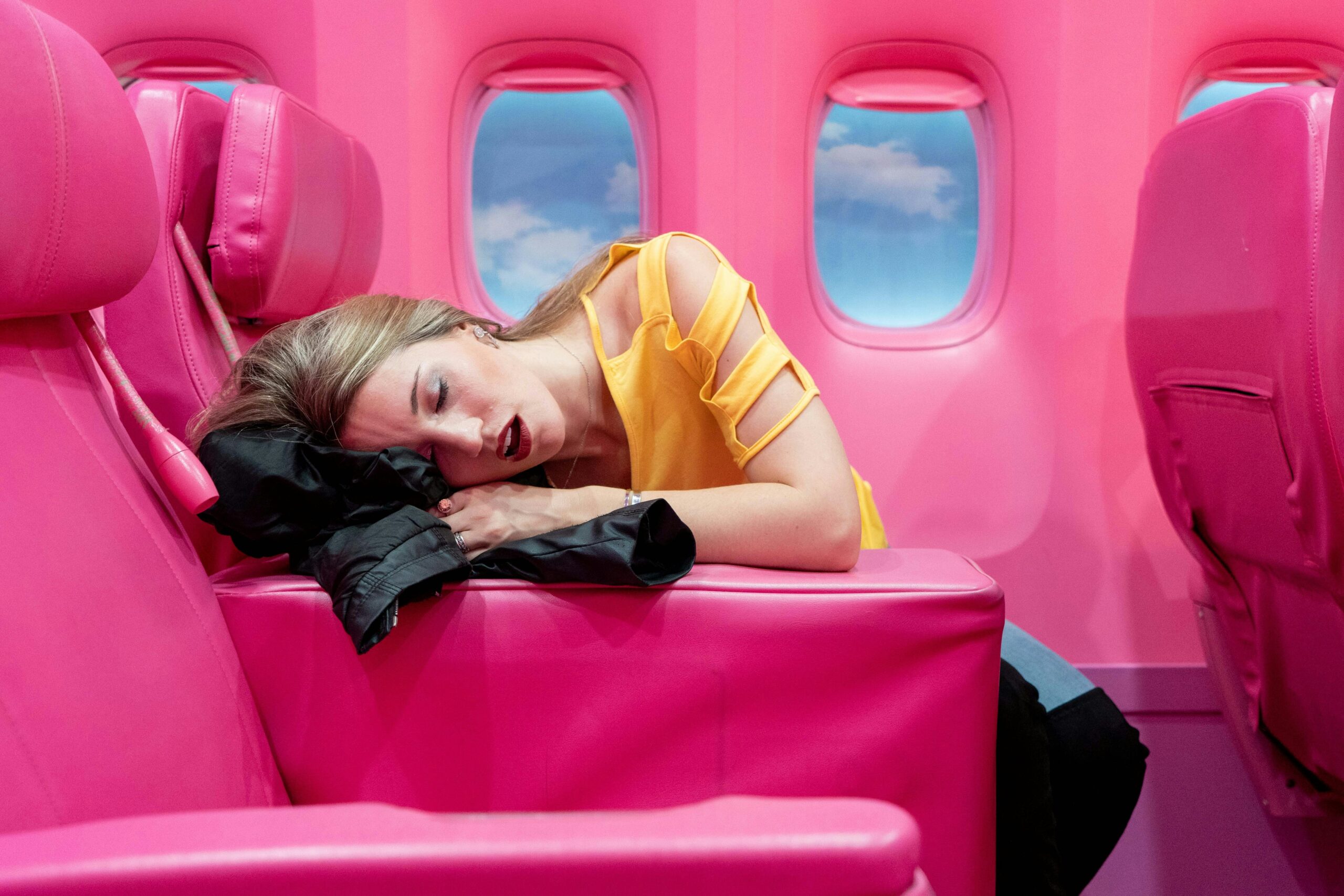
Even frequent fliers struggle to get decent shut-eye at 35,000 feet. But flight attendants, who practically live in the skies, have honed the art of in-flight rest. Whether you’re on a red-eye or tackling jet lag, sleeping well on a plane takes more than a neck pillow. We gathered the best tips from seasoned crew members—tricks that go beyond the basics and help you create your own sleep bubble in the clouds. From adjusting your body clock to skipping the drink cart, here’s how to rest easy in the air.
Choose a Window Seat on the Left Side
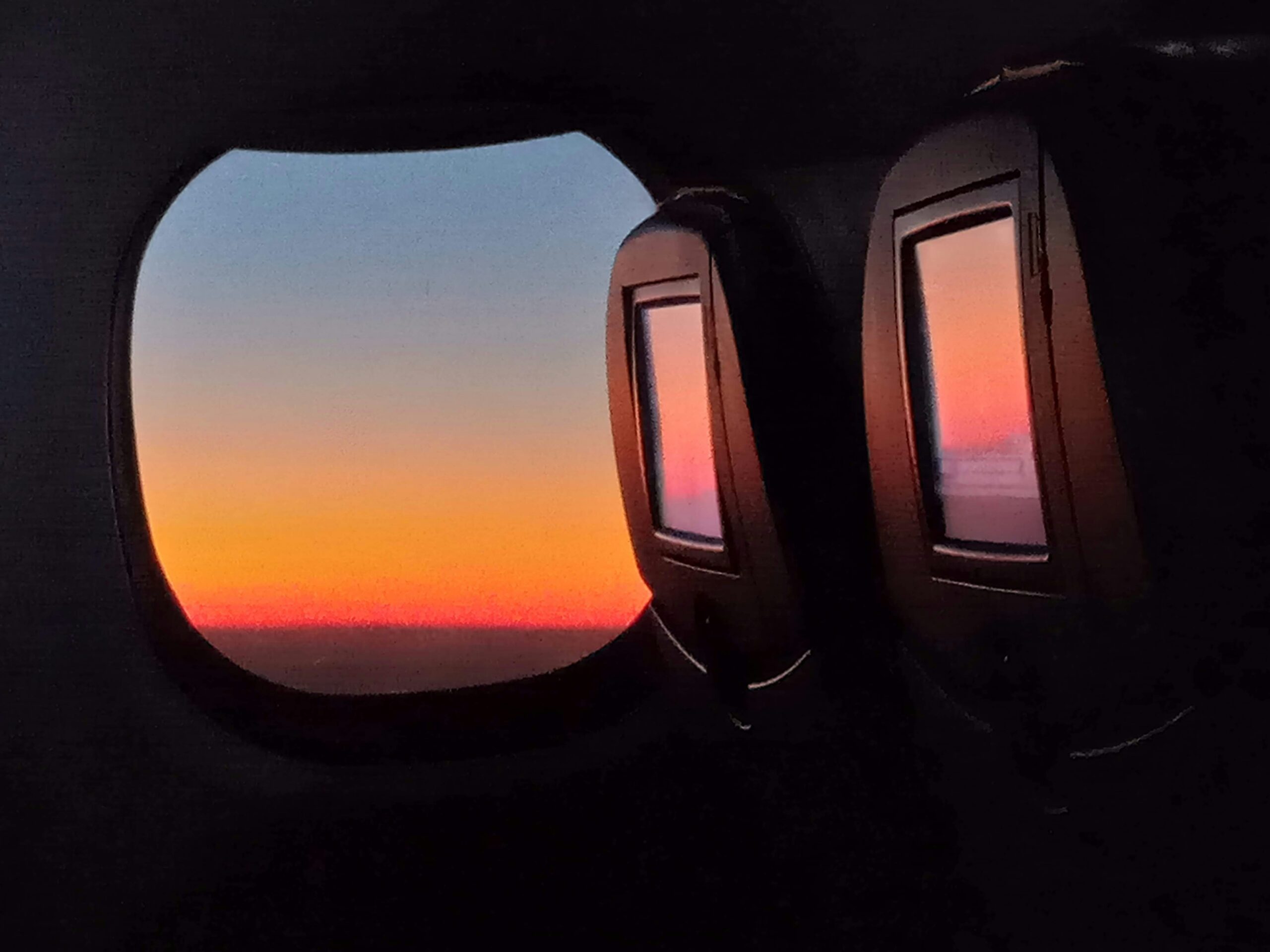
Flight attendants often opt for the window seat—especially on the left side, where the windows are slightly misaligned with the seats, allowing better head support. A window lets you lean your pillow against the wall and control your light exposure. It also means no one wakes you up to use the restroom. For longer flights, try to book a window away from high-traffic zones like galleys and restrooms to reduce noise and disruptions.
Dress in Comfortable, Layered Clothing

Cabin temperatures can swing from arctic to stuffy, so layering is essential. Flight attendants recommend soft, breathable fabrics like cotton or bamboo. Bring a lightweight hoodie or scarf that can double as a blanket or eye shield. Avoid tight waistbands, synthetic fabrics, or anything that makes movement uncomfortable. The cozier and more adaptable your outfit, the easier it’ll be to fall asleep—even before takeoff.
Avoid Caffeine and Alcohol Before and During Flight
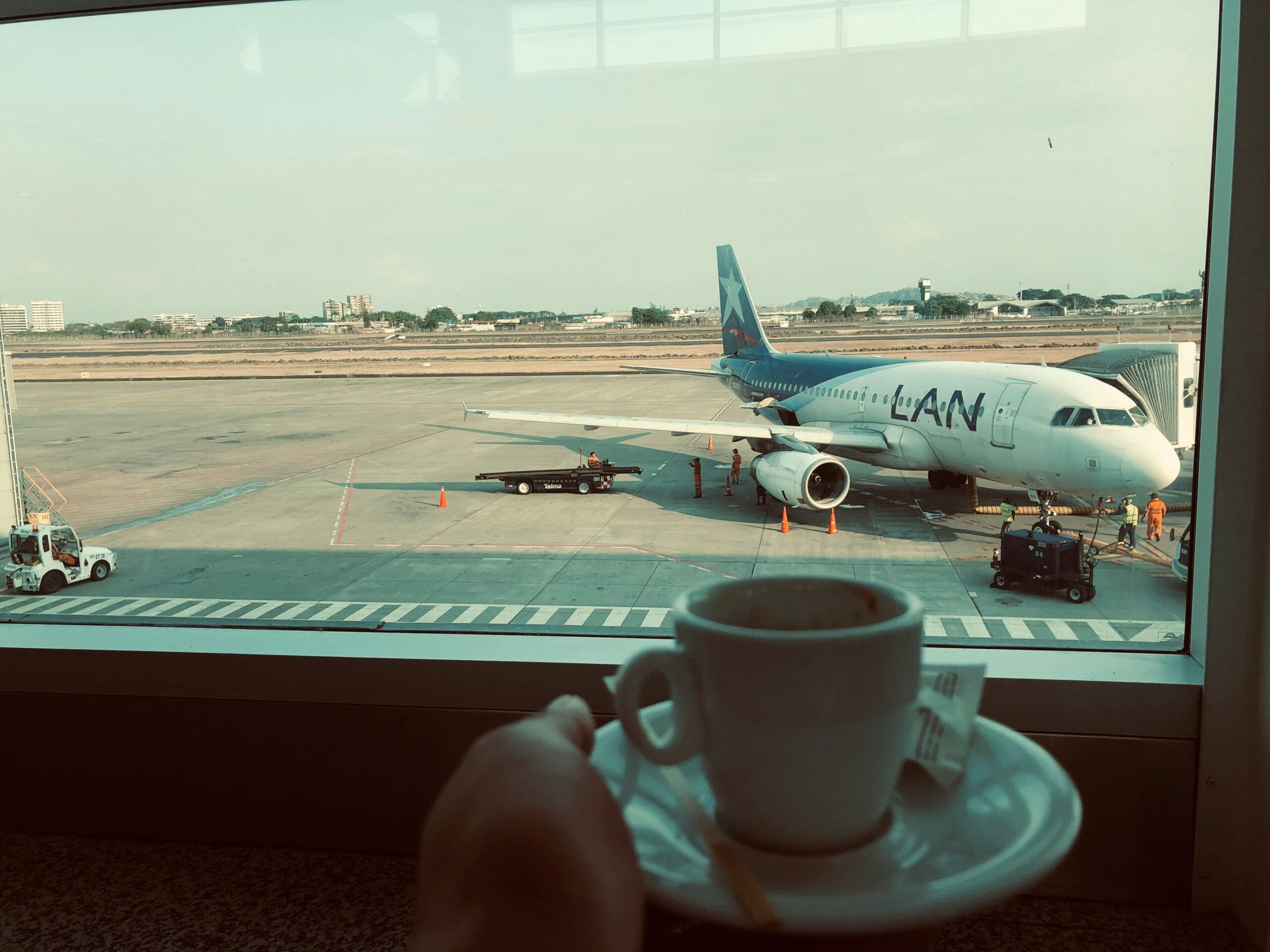
As tempting as that free wine or airport latte might be, caffeine and alcohol are sleep stealers. Flight attendants suggest avoiding both at least 4–6 hours before your flight. Caffeine stays in your system longer than you think, and alcohol disrupts your REM cycle and dehydrates you. Instead, hydrate with water or calming herbal teas, like chamomile, to prepare your body for better rest once you’re airborne.
Use a Neck Pillow—Backwards
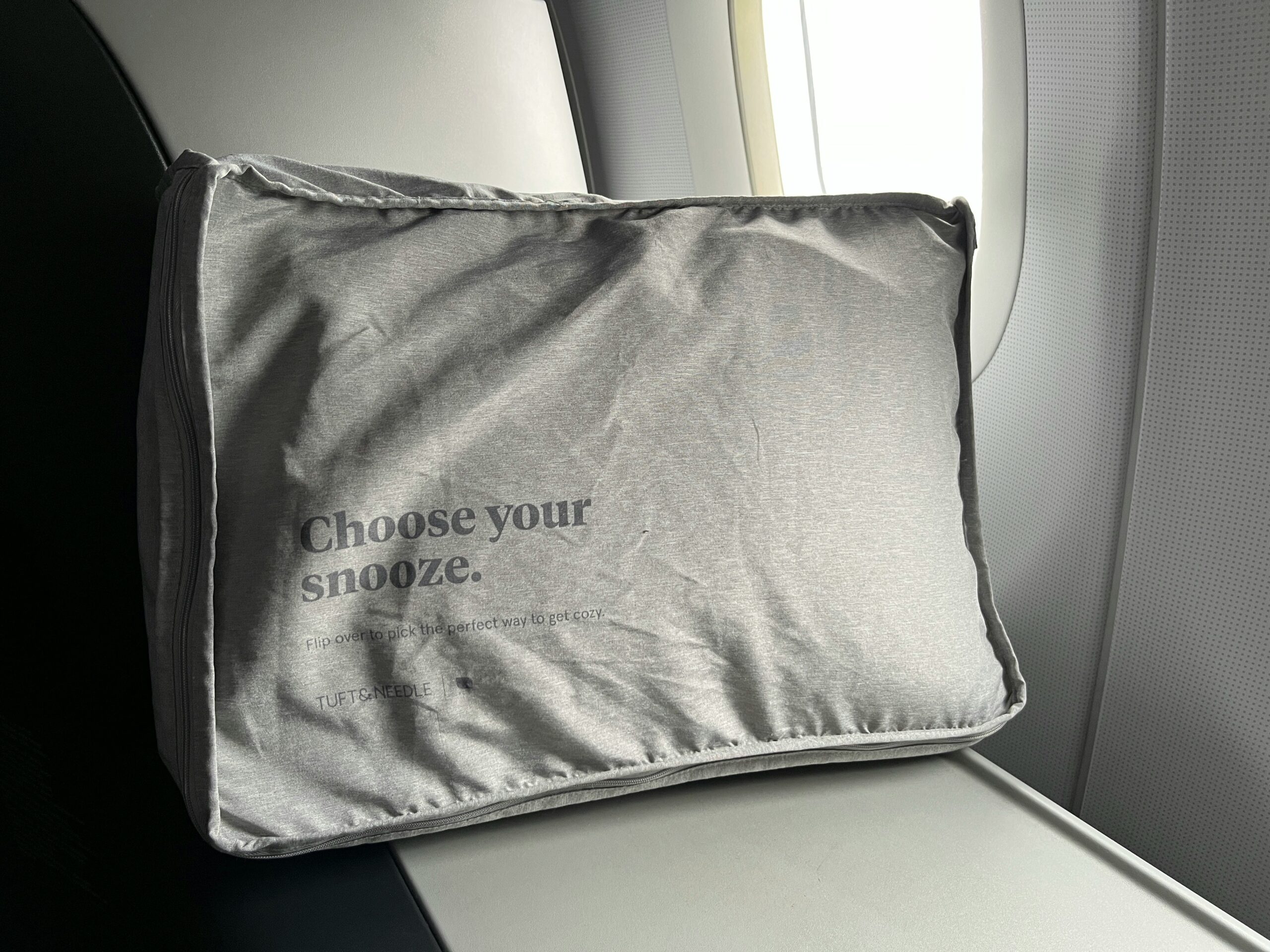
Instead of placing a U-shaped neck pillow behind your neck, turn it around so the bulk supports your chin. This prevents your head from lolling forward as you drift off—a trick many flight attendants swear by for upright sleep. Some prefer memory foam options, which contour better and offer firmer support. Others swear by inflatable models for their portability. Either way, the backward trick adds a surprising level of comfort.
Invest in a Quality Eye Mask
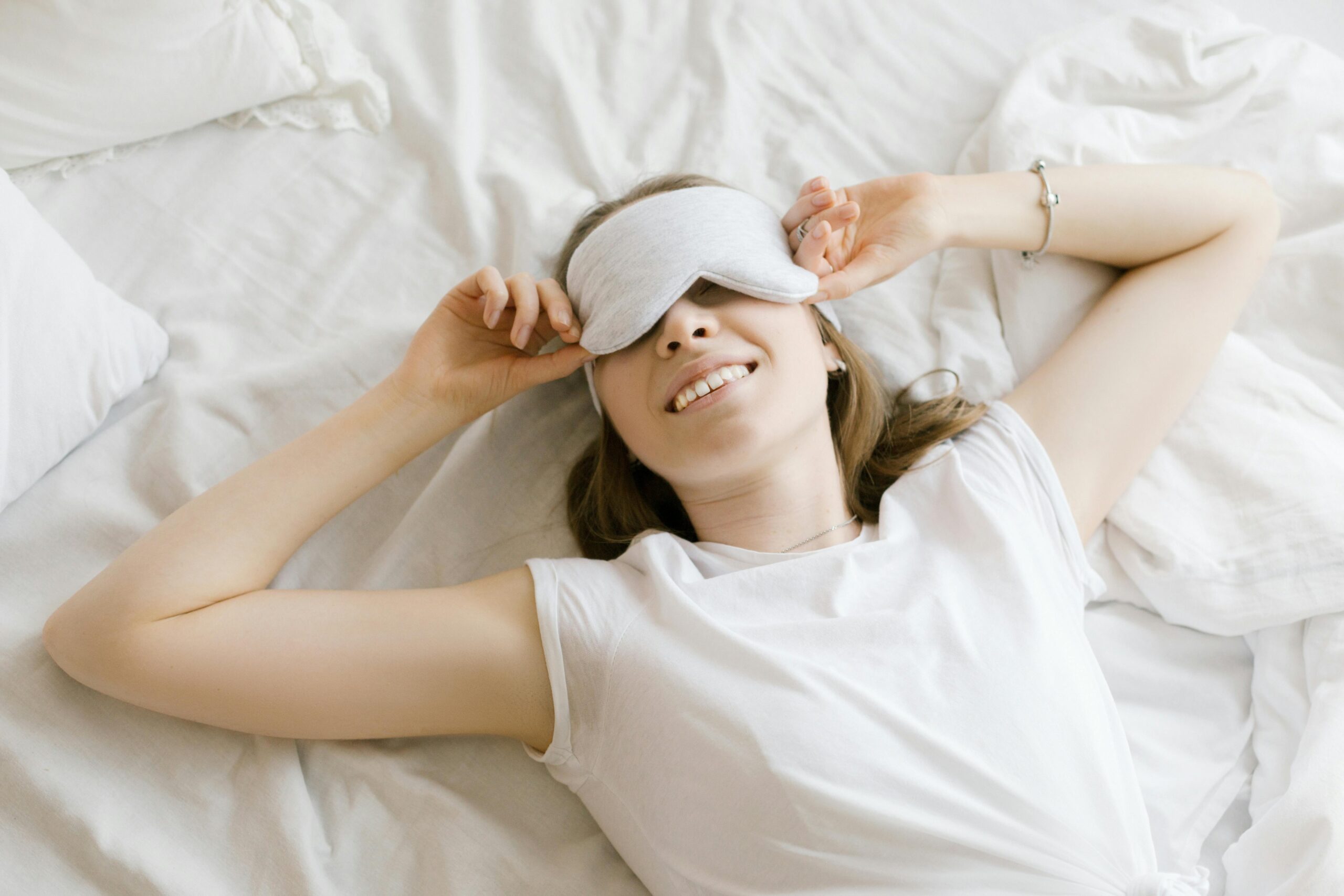
Light is the enemy of airplane sleep. A high-quality eye mask blocks out everything from overhead lights to sunrise through the window. Choose one with a molded or padded design so it doesn’t press against your eyelids. Flight crews recommend masks with adjustable straps and breathable materials. The better the darkness, the deeper your rest—and the more likely you’ll actually feel refreshed upon landing.
Bring Noise-Canceling Headphones or Earplugs
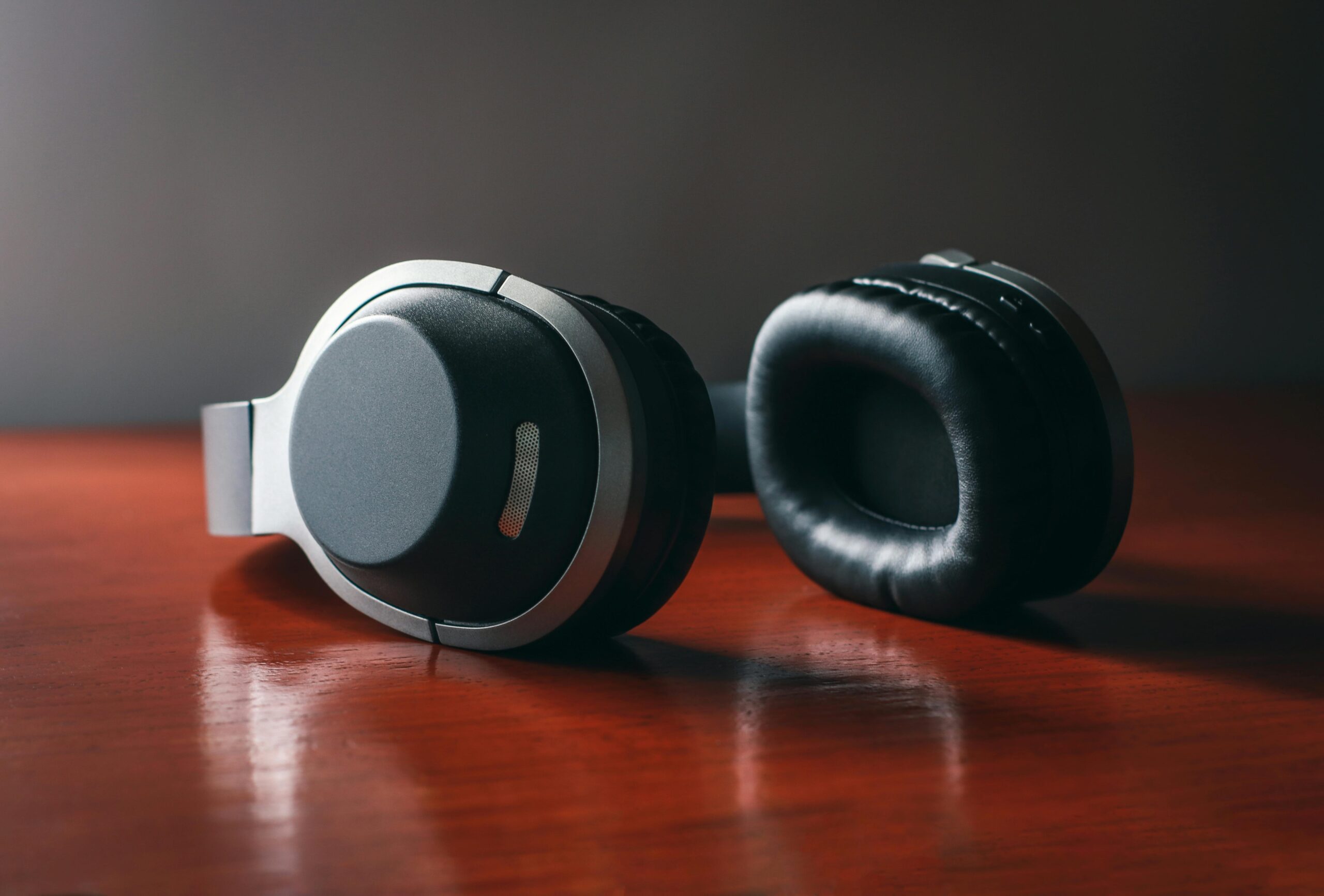
Engines, crying babies, announcements—the soundscape of a flight is anything but relaxing. Noise-canceling headphones are a staple in any flight attendant’s carry-on, especially for longer flights. If those aren’t your thing, go for high-quality foam earplugs that fit well. Pair them with white noise, soft music, or sleep-focused soundscapes to help your brain tune out the chaos and slip into rest mode.
Adjust Your Sleep Schedule Before the Flight
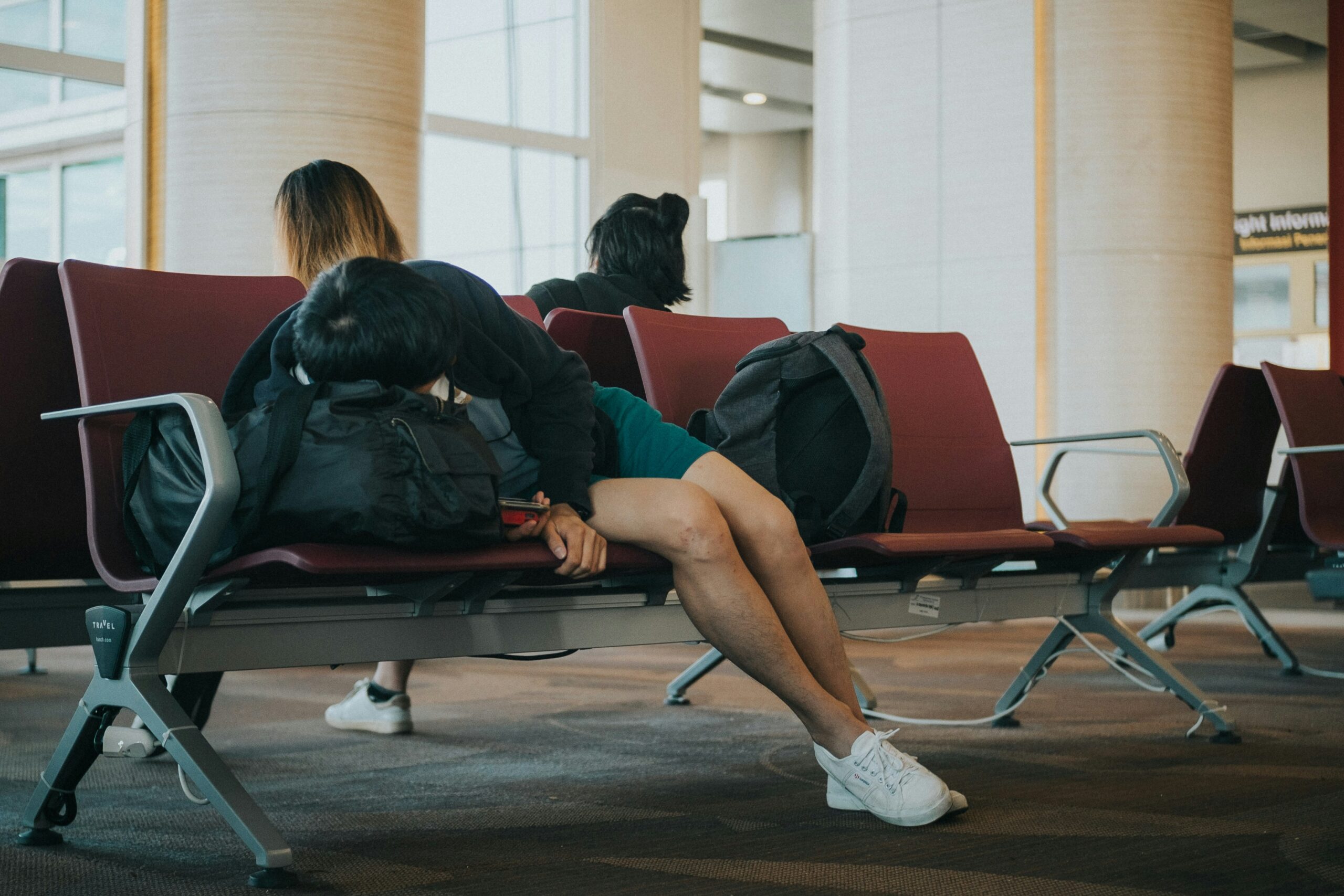
Pre-adjusting your sleep pattern by even 1–2 hours can help you sync better with your destination’s time zone. Flight attendants traveling across time zones often begin this shift a couple days before flying. If that’s not possible, try to match your sleep with the destination once onboard by setting your watch and behavior accordingly. It’s not foolproof, but it can reduce the jet lag shock and help you nap at the right times.
Eat Light and Skip the Final Meal
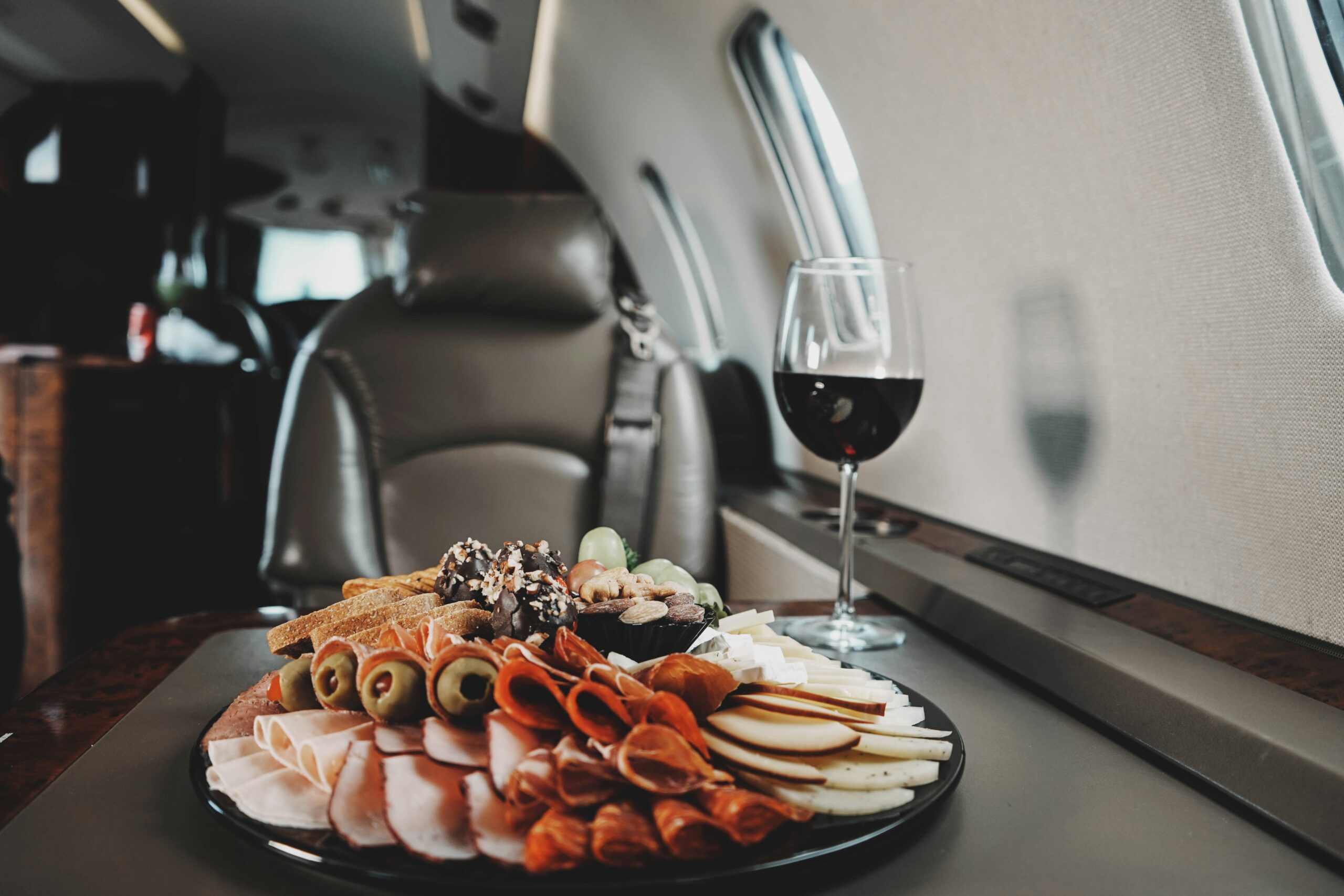
Heavy meals make sleep harder and digestion slower—especially in pressurized cabins. Flight crews often skip the second meal service on long-haul flights and eat something light before boarding. If you’re hungry mid-flight, go for a small snack like fruit or crackers. Avoid heavy carbs, sugar, or processed meats which can leave you bloated and uncomfortable. Your stomach and sleep quality will thank you.
Recline—But Do It Kindly
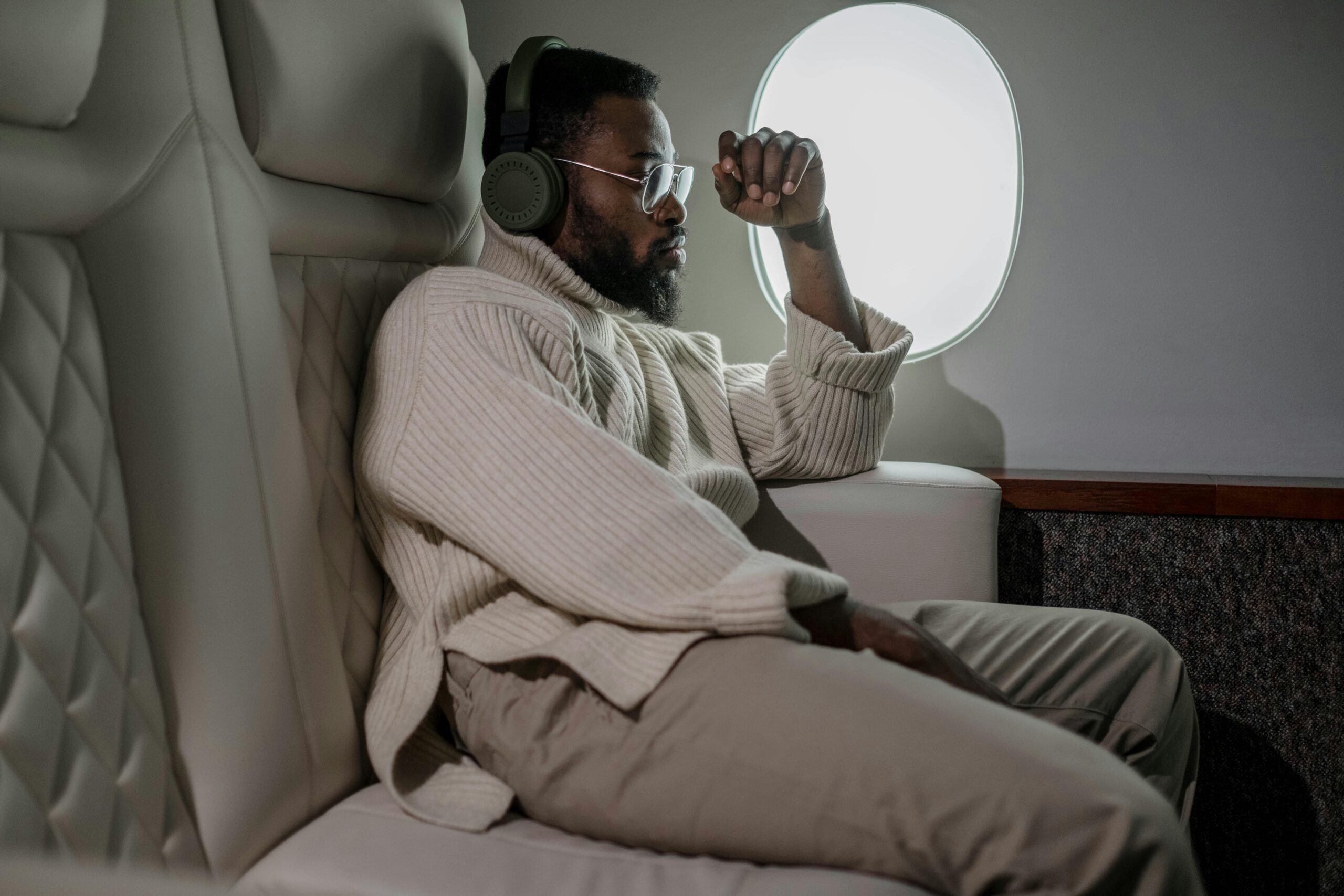
If you’re going to recline your seat, do it with care. Reclining can definitely make sleeping easier by relieving pressure on your lower back. Flight attendants recommend gently reclining once meal service is done and checking behind you before hitting the button. Add a lumbar pillow or rolled-up jacket for extra support. Reclining works best when combined with other tips—especially if you’ve claimed that prime window seat.
Bring Your Own Blanket or Shawl

Airline blankets can be scratchy, thin, or not available at all. Crew members suggest bringing your own shawl, pashmina, or lightweight blanket. Not only does it offer consistent warmth, but it’s also more hygienic. Some travelers even spray their blanket with a soothing scent like lavender to cue the body that it’s time to rest. The comfort and familiarity of your own layer can make drifting off much easier.
Use a Footrest or Backpack for Elevation
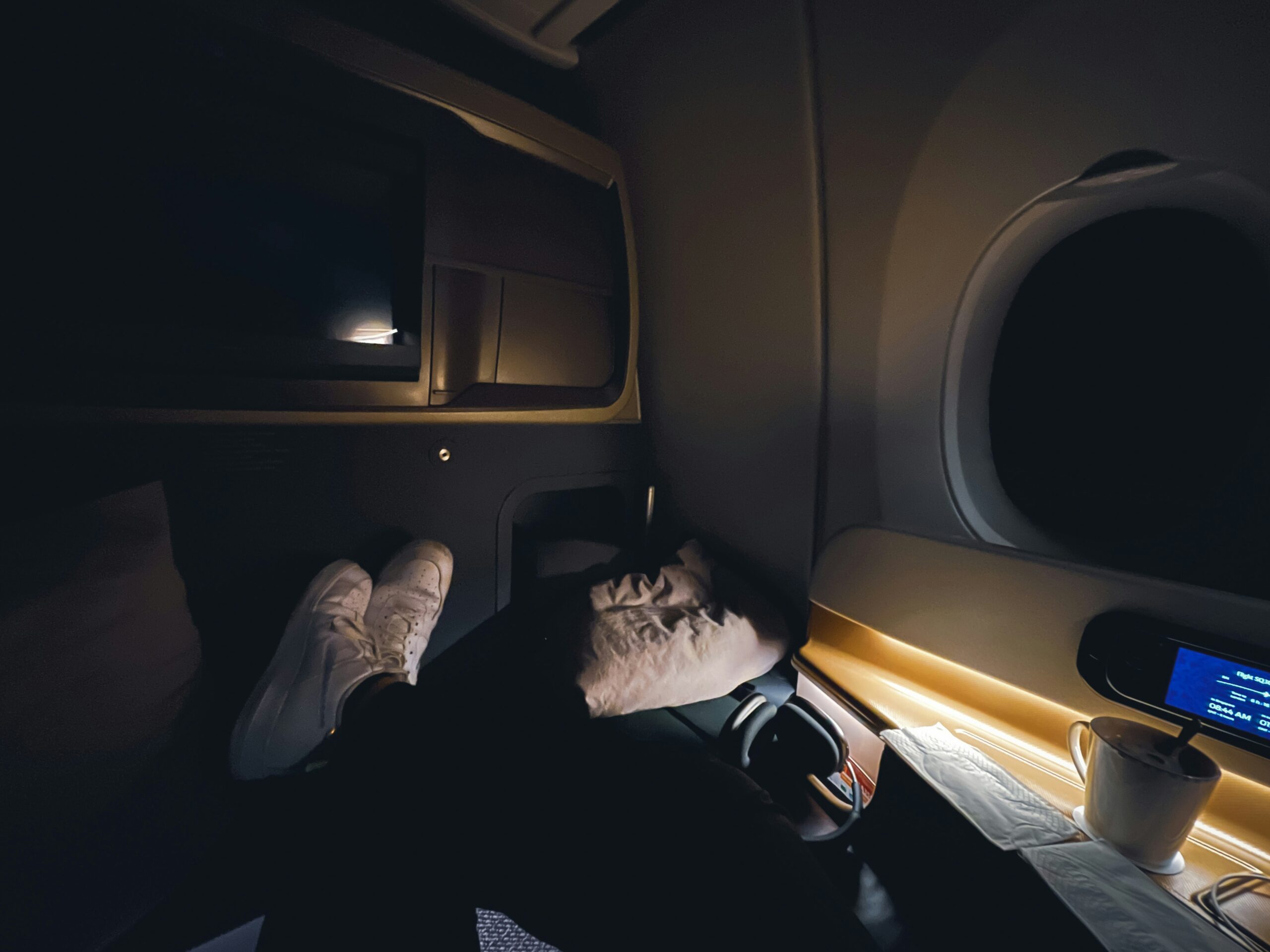
Dangling feet lead to poor circulation and lower back pain. Flight attendants often use their carry-on bag or a compact travel footrest to prop up their legs. Elevating your feet slightly improves blood flow and relieves pressure on your spine and knees. For longer flights, try shifting your position now and then to avoid numbness. It’s a small change with a surprisingly big impact on comfort and rest.
Try Melatonin or Natural Sleep Aids
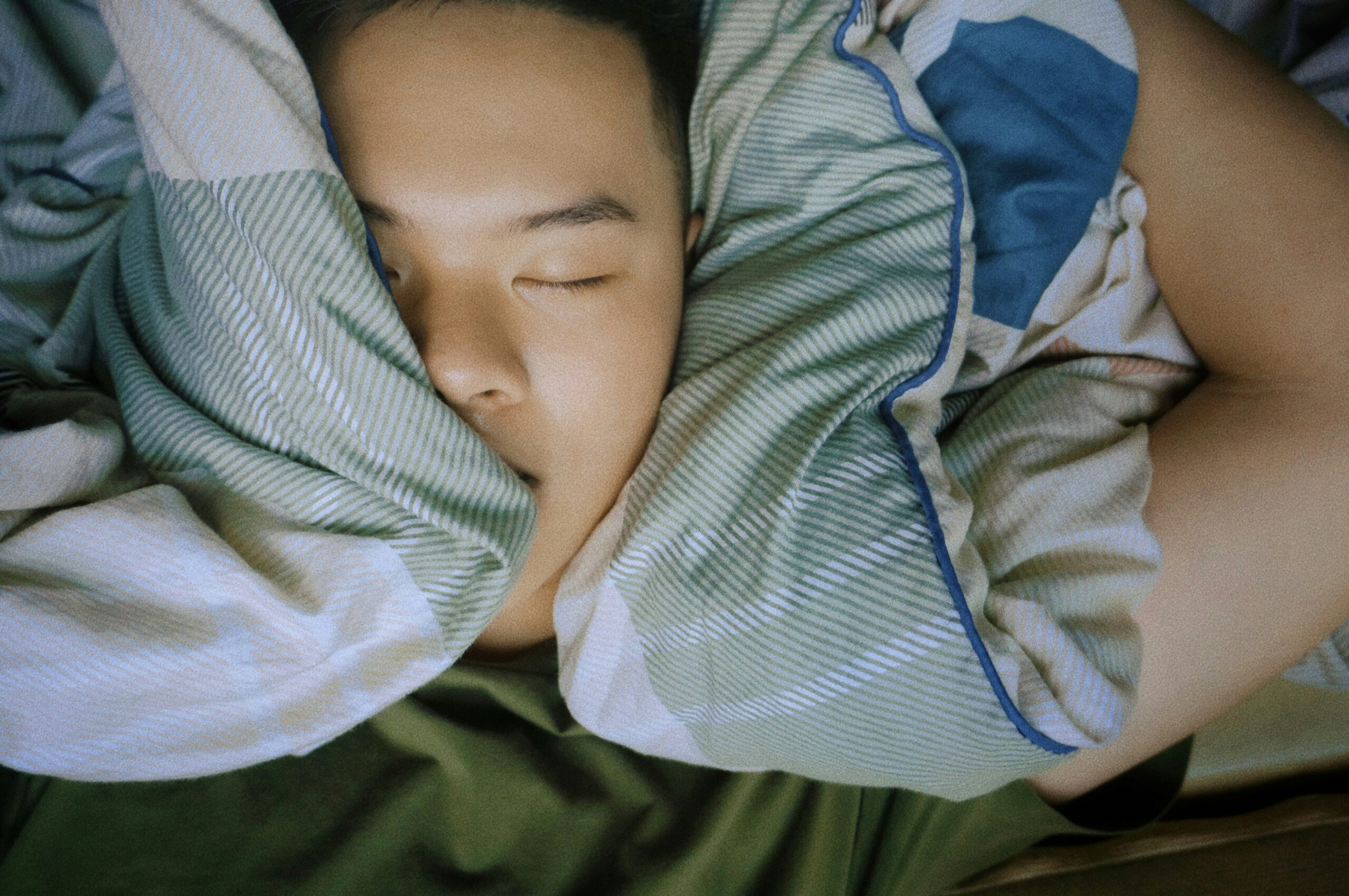
For those who need extra help nodding off, flight attendants suggest melatonin—but in small doses, like 0.5 to 1mg. It’s less about knocking you out and more about helping your body signal sleep. Other natural options include valerian root, magnesium, or L-theanine. Avoid heavy-duty sleeping pills that can leave you groggy or unsteady post-landing. Always test a sleep aid at home before taking it on a flight.